 |
 Mart's Snowshoe Caddis |
|
|
Hair from Snowshoe hare feet is a relatively new fly tying material
and since its introduction in the eighties (Fran Betters' Usual) it has
rapidly gained popularity among tiers, especially in the last few years. The dense, curly underfur holds a lot of air bubbles. It is easily compressed, so it is tied in without too much bulk. The hair is very hydrophobic and buoyant, and the guard hairs are stiff and translucent. Much more information about using Snowshoe hair can be found in Leeson and Schollmeyer's excellent book Tying Emergers. The buoyancy of the hair is one advantage, another big plus is the fact that it is quite sturdy. If the fly becomes slimy after a couple of fish we can simply rinse it, pinch the water out, rub it dry against a sleeve, and the fly fishes like new. So yes — a hare's foot brings luck! I use Snowshoe hair for several patterns, including the Snowshoe Caddis, Snowshoe Emerger and the Snowshoe Sparkle Dun. They are quick ties, and very effective patterns. Of course their sizes and colors can be easily adapted to local circumstances. Have fun! ~ Mart
Materials: Mart's Snowshoe CaddisHook: Daiichi 1180 #14-16 Method: Mart's Snowshoe Caddis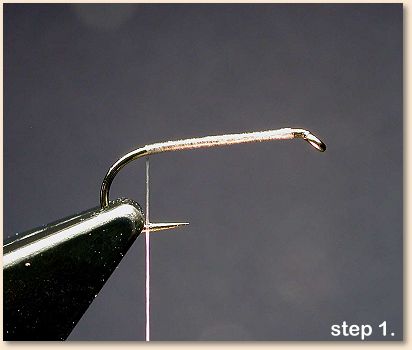 1. Wrap the thread to the point of the barb.
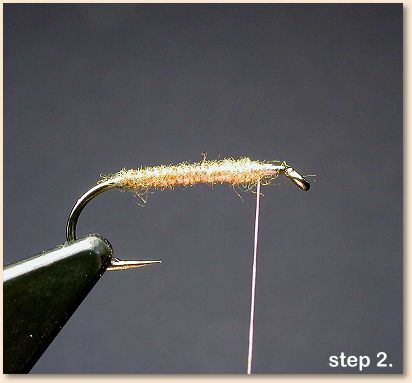 2. Dub a thin and tight body.
 3. Tie a bunch of Snowshoe hair on top of the hook. The hair should not extend past the hook by more than 1/3 hook length. Tie it down with one thread wrap under high tension. If you apply tension to the thread, it's best to pull up on the thread instead of pulling down, because GSP is slippery, and pulling down will cause the wing to fall off the other side of the hook.
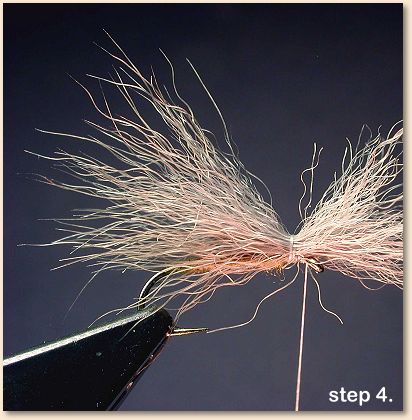 4. Keeping tension on the thread, lift the upper 1/3 portion of the bunch of hair that extends over the hook eye, and make a firm thread wrap. Repeat this two more times for a staggered tie-down (Cf. detail pic). 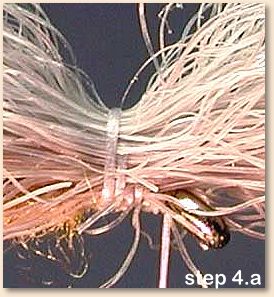 5. Raise the front and back side of the wing. Make 3 to 5 horizontal thread wraps between the hook shank and the wing/front hair bunch. A small drop of varnish or CA glue on the thread doesn't hurt. Leave the thread hanging in front of the wing, tier's side. Untwist the thread by rotating the bobbin counterclockwise until the thread will lay flat.
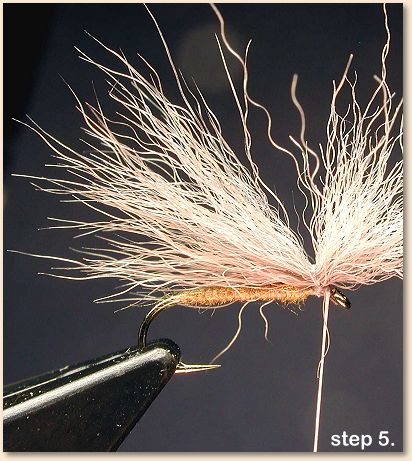 6. Split the thread using a sharp needle. Lightly wax both halves, and put some snowshoe (1/2 to ¾ of an inch) between the split thread.
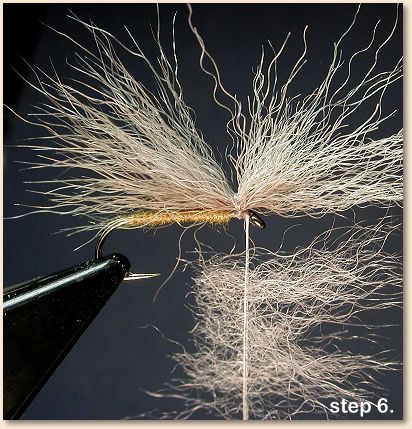 7. Close the loop by twisting the thread in a clockwise direction. 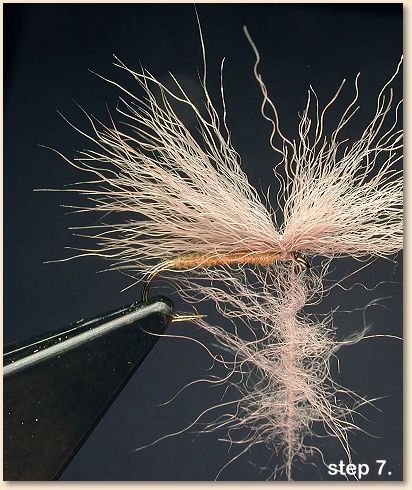 8. Wrap the hair as a parachute hackle between the wing and the body, and try to place each new wrap below the previous one. Three wraps will do. Since you've wrapped the hair parachute in a clockwise direction (viewed from above) it's easiest to tie the fly off with a reversed whip finish (that is: turning towards you). It may seem awkward at first, but if you tie off with a whip finish in the normal direction — away from you — this will pull the thread under the thorax area of the fly.
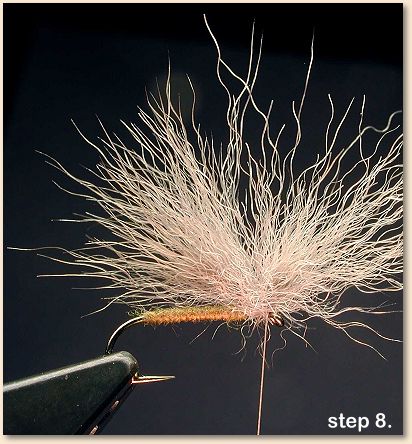 9. The hare hackle - view from below.
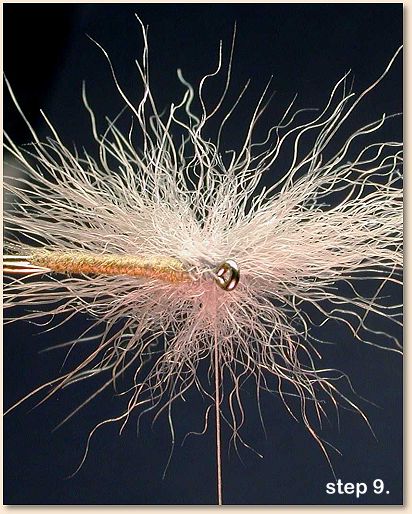 10. Lift the bunch of hair extending over the hook eye and cut, following the direction of the wing.
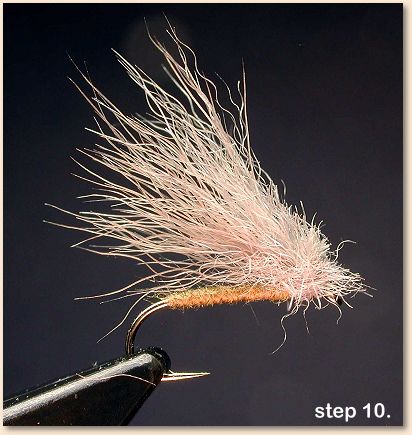 11. Shape the hair hackle with scissors - done!
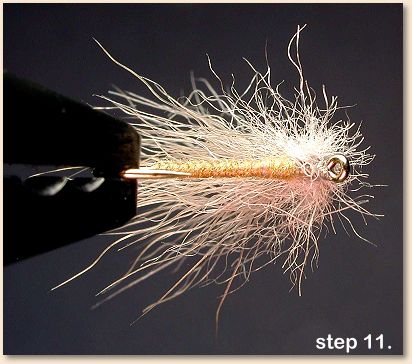 ~ Martin Westbeek, Oisterwijk, Netherlands For more great flies, check out: Beginning Fly Tying, Intermediate Fly Tying and Advanced Fly Tying.
|